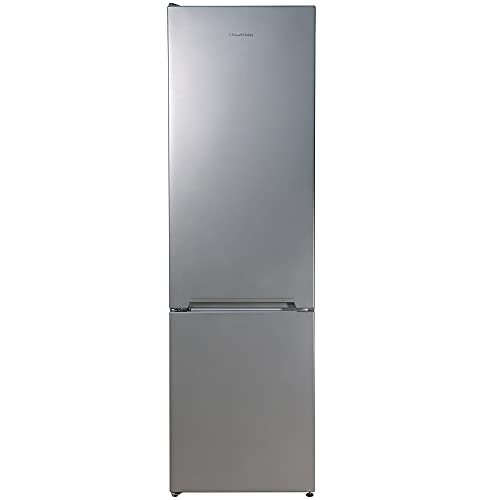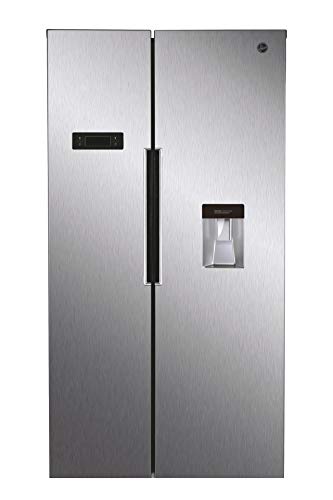
Cheap Fridge Freezer
Add a review FollowOverview
-
Sectors
-
Posted Jobs 0
-
Viewed 10
Company Description
The Best Fridges And Freezers Tricks For Changing Your Life
Understanding Fridges and Freezers: The Essential Kitchen Appliances
Fridges and freezers are 2 of the most vital home appliances in contemporary kitchens. These home appliances serve a crucial function in food conservation and waste reduction by making sure that perishable products stay fresh and safe for consumption. This short article explores the various types of fridges and freezers, their performances, and essential factors to consider for choice and upkeep.
Types of Refrigerators
The marketplace offers a variety of refrigerator types, each created to fulfill different consumer requirements. Below is a list of the most typical kinds of fridges:

-
Top-Freezer Refrigerators
- Most common type.
- Freezer compartment lies above the refrigerator section.
- Usually more inexpensive and energy-efficient.
-
Bottom-Freezer Refrigerators
- Freezer is located at the bottom.
- Allows easier access to fresh products at eye level.
- Frequently features pull-out drawers for much better company.
-
Side-by-Side Refrigerators
- Refrigerator and freezer areas are nearby.
- Perfect for narrow kitchen areas and allows simple access to both compartments.
- Often includes water and ice dispensers.
-
French Door Refrigerators
- Integrates a bottom freezer with double doors at the top.
- Offers sufficient storage and elegant styles.
- Typically includes functions like temperature-controlled drawers.
-
Compact Refrigerators
- Smaller sized size suitable for minimal areas.
- Commonly utilized in dormitory, little homes, or as secondary fridges.
Table 1: Comparison of Refrigerator Types
| Type | Advantages | Downsides | Common Size |
|---|---|---|---|
| Top-Freezer | Cost effective, energy-efficient | Less convenient access to the freezer | 14-30 cu. ft. |
| Bottom-Freezer | Easier access to fresh food | Freezer can be more difficult to organize | 19-30 cu. ft. |
| Side-by-Side | Easy access, water/ice dispenser | Narrow vs. storage area | 22-30 cu. ft. |
| French Door | Elegant, spacious, arranged | More costly | 20-30+ cu. ft. |
| Compact | Space-saving, portable | Minimal storage | 1.7-5.5 cu. ft. |
Types of Freezers
Freezers are an equally important device for food preservation. They are available in different styles created to fit various household requirements. Think about the list below types:
-
Upright Freezers
- Run like a basic refrigerator with vertical storage.
- Easier to organize with racks and compartments.
-
Chest Freezers
- Big, horizontal design generally providing more storage area.
- Maintains temperature levels much better throughout power outages.
- More energy-efficient than upright designs.
-
Portable Freezers
- Compact systems ideal for outdoor activities or small areas.
- Frequently utilized for camping trips or as short-term storage.
Table 2: Comparison of Freezer Types
| Type | Benefits | Downsides | Normal Size |
|---|---|---|---|
| Upright Freezer | Much easier to arrange | Less energy-efficient, more flooring space | 5-20 cu. ft. |
| Chest Freezer | Holds more items, energy-efficient | Harder to organize | 5-25 cu. ft. |
| Portable Freezer | Compact and flexible | Restricted storage capacity | 1-10 cu. ft. |
Key Features to Consider
When selecting a fridge or freezer, customers should bear in mind a number of features that can boost functionality:
- Energy Efficiency: Look for models with the ENERGY STAR certification to save money on electrical power costs.
- Storage Capacity: Evaluate storage requirements based upon household size and consuming practices.
- Temperature Control: Some home appliances offer digital controls for exact temperature level settings.
- Adjustable Shelving: Customizable shelving permits ideal organization.
- Water and Ice Dispenser: Offers convenience but can use up important area inside.
- Sound Level: Sound ratings can affect comfort, specifically in open-concept homes.
Pros and Cons of Having a Fridge and Freezer
While fridges and freezers are important technologies, they likewise have specific advantages and drawbacks:
| Pros | Cons |
|---|---|
| Maintain food life expectancy and reduce waste | Need routine maintenance |
| Enable bulk buying and meal prepping | Can be pricey to purchase and run |
| Offer convenience and quick access to food | Inhabit substantial cooking area area |
Maintenance Tips
To make sure longevity and optimum performance of fridges and freezers, think about the following upkeep suggestions:
- Regular Cleaning: Clean the exterior and interior occasionally to avoid accumulation of dirt and germs.
- Examine Seals: Inspect door seals frequently for leaks to preserve effectiveness.
- Temperature level Settings: Keep the fridge at 34-38 ° F and the freezer at 0 ° F for optimal food preservation.
- Thaw as Needed: Chest freezers must be thawed frequently to keep performance.
- Clear Air Vents: Ensure that air flow isn’t obstructed to enhance energy performance.
FAQs About Fridges and Freezers
Q1: How long can food be kept in a freezer?A: Most foods can be kept in a freezer for a number of months. Meats and poultry often last 4-12 months, while vegetables can last as much as 8-12 months.

Q2: How typically must I clean my fridge and freezer?A: It is advisable to clean your fridge and freezer every 3 to 6 months, or as required when spills take place. Q3: Can I put hot food straight in the fridge?A: It is recommended to cool hot food to room temperature before positioning it in the fridge to prevent
raising the temperature level inside the device. Q4: Why is my fridge running constantly?A: This could be due to a malfunctioning thermostat, stopped up coils, or door seals that aren’t working effectively. Fridges and freezers are important
possessions to contemporary homes, supplying important services for food storage and conservation.
Understanding the different types, functions, and upkeep requirements can assist customers select the best Fridges home appliances for their requirements and maximize their functionality. Embracing energy-efficient models not only supports sustainable practices however also contributes to substantial cost savings on energy bills, making notified options more vital than ever.

